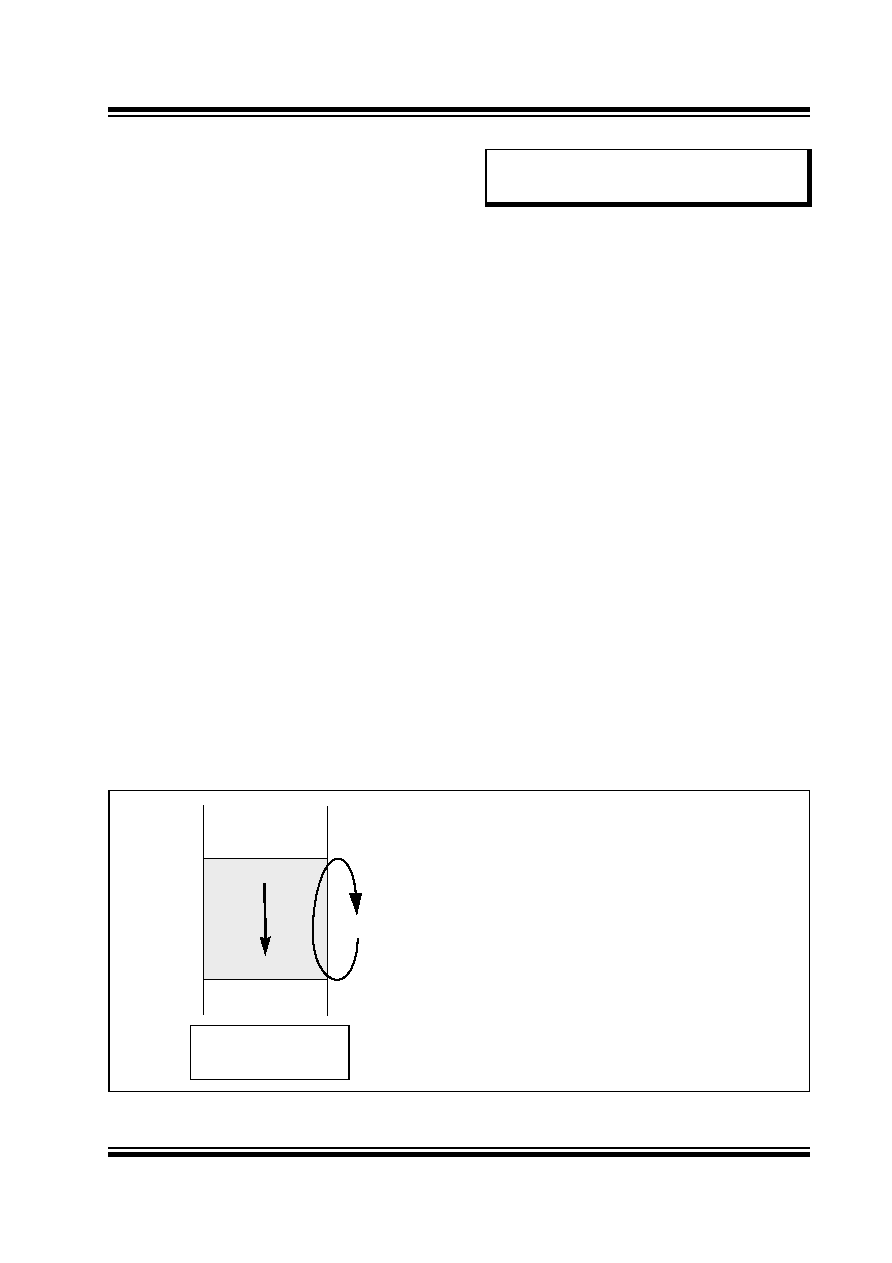- 您现在的位置:买卖IC网 > PDF目录1918 > DSPIC33FJ16GS404T-50I/PT (Microchip Technology)IC MCU/DSP 16KB FLASH 44-TQFP PDF资料下载
参数资料
| 型号: | DSPIC33FJ16GS404T-50I/PT |
| 厂商: | Microchip Technology |
| 文件页数: | 154/182页 |
| 文件大小: | 0K |
| 描述: | IC MCU/DSP 16KB FLASH 44-TQFP |
| 标准包装: | 1,200 |
| 系列: | dsPIC™ 33F |
| 核心处理器: | dsPIC |
| 芯体尺寸: | 16-位 |
| 速度: | 50 MIPs |
| 连通性: | I²C,IrDA,LIN,SPI,UART/USART |
| 外围设备: | 欠压检测/复位,POR,PWM,WDT |
| 输入/输出数: | 35 |
| 程序存储器容量: | 16KB(16K x 8) |
| 程序存储器类型: | 闪存 |
| RAM 容量: | 2K x 8 |
| 电压 - 电源 (Vcc/Vdd): | 3 V ~ 3.6 V |
| 数据转换器: | A/D 8x10b |
| 振荡器型: | 内部 |
| 工作温度: | -40°C ~ 85°C |
| 封装/外壳: | 44-TQFP |
| 包装: | 带卷 (TR) |
第1页第2页第3页第4页第5页第6页第7页第8页第9页第10页第11页第12页第13页第14页第15页第16页第17页第18页第19页第20页第21页第22页第23页第24页第25页第26页第27页第28页第29页第30页第31页第32页第33页第34页第35页第36页第37页第38页第39页第40页第41页第42页第43页第44页第45页第46页第47页第48页第49页第50页第51页第52页第53页第54页第55页第56页第57页第58页第59页第60页第61页第62页第63页第64页第65页第66页第67页第68页第69页第70页第71页第72页第73页第74页第75页第76页第77页第78页第79页第80页第81页第82页第83页第84页第85页第86页第87页第88页第89页第90页第91页第92页第93页第94页第95页第96页第97页第98页第99页第100页第101页第102页第103页第104页第105页第106页第107页第108页第109页第110页第111页第112页第113页第114页第115页第116页第117页第118页第119页第120页第121页第122页第123页第124页第125页第126页第127页第128页第129页第130页第131页第132页第133页第134页第135页第136页第137页第138页第139页第140页第141页第142页第143页第144页第145页第146页第147页第148页第149页第150页第151页第152页第153页当前第154页第155页第156页第157页第158页第159页第160页第161页第162页第163页第164页第165页第166页第167页第168页第169页第170页第171页第172页第173页第174页第175页第176页第177页第178页第179页第180页第181页第182页

2008-2012 Microchip Technology Inc.
DS70318F-page 73
dsPIC33FJ06GS101/X02 and dsPIC33FJ16GSX02/X04
4.4
Modulo Addressing
Modulo Addressing mode is a method used to provide
an automated means to support circular data buffers
using hardware. The objective is to remove the need
for software to perform data address boundary checks
when executing tightly looped code, as is typical in
many DSP algorithms.
Modulo Addressing can operate in either data or program
space (since the data pointer mechanism is essentially
the same for both). One circular buffer can be supported
in each of the X (which also provides the pointers into
program space) and Y data spaces. Modulo Addressing
can operate on any W register pointer. However, it is not
advisable to use W14 or W15 for Modulo Addressing
since these two registers are used as the Stack Frame
Pointer and Stack Pointer, respectively.
In general, any particular circular buffer can be
configured to operate in only one direction as there are
certain restrictions on the buffer start address (for
incrementing
buffers),
or
end
address
(for
decrementing buffers), based upon the direction of the
buffer.
The only exception to the usage restrictions is for
buffers that have a power-of-two length. As these
buffers satisfy the start and end address criteria, they
can operate in a bidirectional mode (that is, address
boundary checks are performed on both the lower and
upper address boundaries).
4.4.1
START AND END ADDRESS
The Modulo Addressing scheme requires that a
starting and ending address be specified and loaded
into the 16-bit Modulo Buffer Address registers:
XMODSRT, XMODEND, YMODSRT and YMODEND
(see Table 4-1).
The length of a circular buffer is not directly specified. It
is
determined
by
the
difference
between
the
corresponding start and end addresses. The maximum
possible length of the circular buffer is 32K words
(64 Kbytes).
4.4.2
W ADDRESS REGISTER
SELECTION
The Modulo and Bit-Reversed Addressing Control
register, MODCON<15:0>, contains enable flags as
well as a W register field to specify the W Address
registers. The XWM and YWM fields select the
registers that will operate with Modulo Addressing:
If XWM = 15, X RAGU and X WAGU Modulo
Addressing is disabled.
If YWM = 15, Y AGU Modulo Addressing is
disabled.
The X Address Space Pointer W register (XWM), to
which Modulo Addressing is to be applied, is stored in
MODCON<3:0> (see Table 4-1). Modulo Addressing is
enabled for X data space when XWM is set to any value
other than ‘15’ and the XMODEN bit is set at
MODCON<15>.
The Y Address Space Pointer W register (YWM) to
which Modulo Addressing is to be applied is stored in
MODCON<7:4>. Modulo Addressing is enabled for Y
data space when YWM is set to any value other than
‘15’ and the YMODEN bit is set at MODCON<14>.
FIGURE 4-7:
MODULO ADDRESSING OPERATION EXAMPLE
Note:
Y
space
Modulo
Addressing
EA
calculations
assume
word-sized
data
(LSb of every EA is always clear).
0x1100
0x1163
Start Addr = 0x1100
End Addr = 0x1163
Length = 0x0032 words
Byte
Address
MOV
#0x1100, W0
MOV
W0, XMODSRT
;set modulo start address
MOV
#0x1163, W0
MOV
W0, MODEND
;set modulo end address
MOV
#0x8001, W0
MOV
W0, MODCON
;enable W1, X AGU for modulo
MOV
#0x0000, W0
;W0 holds buffer fill value
MOV
#0x1110, W1
;point W1 to buffer
DO
AGAIN, #0x31
;fill the 50 buffer locations
MOV
W0, [W1++]
;fill the next location
AGAIN:
INC W0, W0
;increment the fill value
相关PDF资料 |
PDF描述 |
|---|---|
| DSPIC33FJ256GP510-I/PF | IC DSPIC MCU/DSP 256K 100TQFP |
| DSPIC33FJ256MC510-I/PF | IC DSPIC MCU/DSP 256K 100TQFP |
| DSPIC33FJ256MC710-I/PF | IC DSPIC MCU/DSP 256K 100TQFP |
| DSPIC33FJ32MC202-E/MM | IC DSPIC MCU/DSP 32K 28QFN |
| DSPIC33FJ64MC710-I/PF | IC DSPIC MCU/DSP 64K 100TQFP |
相关代理商/技术参数 |
参数描述 |
|---|---|
| dsPIC33FJ16GS404T-E/TL | 功能描述:数字信号处理器和控制器 - DSP, DSC 16Bit MCU/DSP 40MIPS 16 KB FLASH SMPS RoHS:否 制造商:Microchip Technology 核心:dsPIC 数据总线宽度:16 bit 程序存储器大小:16 KB 数据 RAM 大小:2 KB 最大时钟频率:40 MHz 可编程输入/输出端数量:35 定时器数量:3 设备每秒兆指令数:50 MIPs 工作电源电压:3.3 V 最大工作温度:+ 85 C 封装 / 箱体:TQFP-44 安装风格:SMD/SMT |
| dsPIC33FJ16GS404T-I/ML | 功能描述:数字信号处理器和控制器 - DSP, DSC 16B MCU/DSP 44 LD 40MIPS 16 KB FLASH RoHS:否 制造商:Microchip Technology 核心:dsPIC 数据总线宽度:16 bit 程序存储器大小:16 KB 数据 RAM 大小:2 KB 最大时钟频率:40 MHz 可编程输入/输出端数量:35 定时器数量:3 设备每秒兆指令数:50 MIPs 工作电源电压:3.3 V 最大工作温度:+ 85 C 封装 / 箱体:TQFP-44 安装风格:SMD/SMT |
| dsPIC33FJ16GS404T-I/PT | 功能描述:数字信号处理器和控制器 - DSP, DSC 16B MCU/DSP 40MIPS 16 KB FLASH RoHS:否 制造商:Microchip Technology 核心:dsPIC 数据总线宽度:16 bit 程序存储器大小:16 KB 数据 RAM 大小:2 KB 最大时钟频率:40 MHz 可编程输入/输出端数量:35 定时器数量:3 设备每秒兆指令数:50 MIPs 工作电源电压:3.3 V 最大工作温度:+ 85 C 封装 / 箱体:TQFP-44 安装风格:SMD/SMT |
| dsPIC33FJ16GS404T-I/TL | 功能描述:数字信号处理器和控制器 - DSP, DSC 16Bit MCU/DSP 40MIPS 16 KB FLASH SMPS RoHS:否 制造商:Microchip Technology 核心:dsPIC 数据总线宽度:16 bit 程序存储器大小:16 KB 数据 RAM 大小:2 KB 最大时钟频率:40 MHz 可编程输入/输出端数量:35 定时器数量:3 设备每秒兆指令数:50 MIPs 工作电源电压:3.3 V 最大工作温度:+ 85 C 封装 / 箱体:TQFP-44 安装风格:SMD/SMT |
| dsPIC33FJ16GS502-50I/MM | 功能描述:数字信号处理器和控制器 - DSP, DSC 16B MCU/DSP 50MIPS 16KB FL SMPS RoHS:否 制造商:Microchip Technology 核心:dsPIC 数据总线宽度:16 bit 程序存储器大小:16 KB 数据 RAM 大小:2 KB 最大时钟频率:40 MHz 可编程输入/输出端数量:35 定时器数量:3 设备每秒兆指令数:50 MIPs 工作电源电压:3.3 V 最大工作温度:+ 85 C 封装 / 箱体:TQFP-44 安装风格:SMD/SMT |
发布紧急采购,3分钟左右您将得到回复。